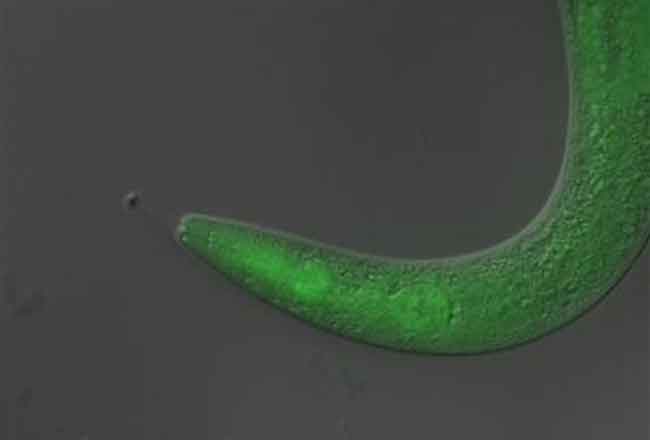Zap! Light Used to Paralyze Tiny Creatures

Set your ultraviolet rays to stun. Researchers have now developed a molecular on-off switch that can paralyze animals when they are exposed to ultraviolet beams.
The animals that scientists experimented with — pinhead-sized worms known as nematodes — stayed paralyzed even when the light was turned off. When exposed to ordinary light, the paralysis wore off.
The researchers fed a light-sensitive material — a "photoswitch" known as dithienylethene — to the transparent worms. When exposed to ultraviolet rays, the molecule turned blue and the worms became paralyzed. Using visible light instead made the chemical turn colorless and the paralysis ended.
{{ video="LS_091119_Paralyze-light" title="Paralyzing Light Beam" caption="Tiny nematodes are paralyzed by ultraviolet light in a new study. They stay that way until regular light is turned on." }}
Although it remains uncertain how the switch causes paralysis, materials scientist Neil Branda at Simon Fraser University in Burnaby, Canada, and his colleagues suspect that when the molecule is blue, its structure interferes with the metabolic pathways responsible for energy in the worm. Different levels of paralysis were seen depending on how much of the photoswitch the worms took — at too high a level, the light even killed the worms.
Branda wanted to make clear that this photoswitch would likely not have the same effect on humans. "You'd have to have a huge amount of it," he explained. "If you did, you might see the activity of cells shut down, which would eventually kill them. Paralysis is just an intermediate step to death in many cases."
The research behind this photoswitch could nevertheless have medical applications, he added.
Get the world’s most fascinating discoveries delivered straight to your inbox.
Other researchers are investigating light-activated therapies — for instance, specific wavelengths of light can in principle trigger microscopic capsules to deliver cancer-fighting medicines, so that doctors can specify when and where they work, as opposed to potentially damaging the rest of the body. One concern there is that such capsules might break down before they are supposed to, releasing their payloads when and where they are not wanted.
If Branda and his colleagues develop photoswitch drugs, then no capsules are needed — the drugs remain inert in the bloodstream until activated.
"For instance, we've demonstrated a photoswitch that changed shape, and in one form, it fit into the active site of an enzyme really well, controlling its activity, while in its other form, it was too big to fit into that site," Branda said. "For any clinical applications, we wouldn't want to use UV light, which can damage tissues."
The research was detailed in a recent issue of the Journal of the American Chemical Society.
- Video: Paralyzing Light Beam
- Laser Zaps Viruses
- Army Developing Paralysis Beam

